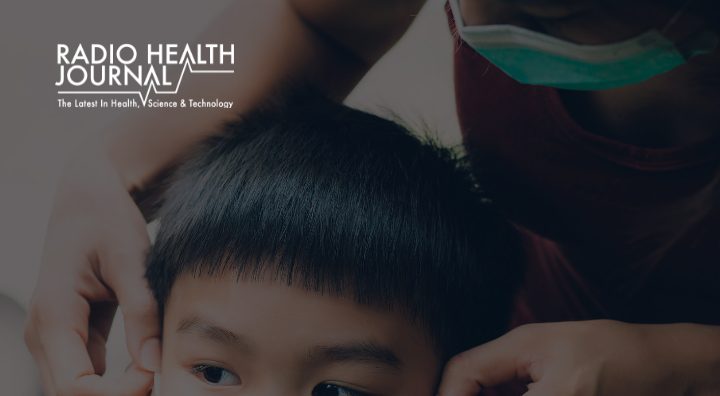Experts have believed that autism affects four times as many boys as girls, but the ratio may not actually be quite that high. Doctors are learning that autism shows up differently in girls’ behavior as a result of brain differences. This leaves many girls with autism undiagnosed.
Guest Information:
- Dr. Thomas Frazier, Director, Center for Autism, Cleveland Clinic
- Dr. Rachel Loftin, Clinical Director, Autism Center, Rush University Medical Center
- Dr. Kevin Pelphrey, Carbonnel Professor of Autism and Neurodevelopmental Disorders, George Washington University
Links for more info:
17-05 Autism in Girls: It’s Different
Reed Pence: Children with autism have become increasingly common. According to the Centers for Disease Control and Prevention, Autism affects 1 of every 68 children in America. But separated out and there’s a big gender difference – Autism affects 1 in ever 42 boys, among girls its 1 in every 189; 4x less common. And experts are learning that’s not the full story, the autism symptoms most people and most doctors are familiar with are what you see in boys – in girls they’re a little different, often more subtle. So there may be a lot of girls who are on the autism spectrum who are never diagnosed at all. Dr. Thomas Frazier is Director of the Center of Autism at the Cleveland Clinic, Childrens.
Dr. Thomas Frazier: I think that probably the ratio is not going to be quite 4:1 and I think the reason is because we’re starting to recognize that there’s some girls that are under identified. Particularly girls that are higher functioning, meaning that they’re cognitively quite typical – they have higher IQ’s, they’re symptoms are more mild and they are able to compensate for those symptoms. So, those girls were missed.
Dr. Rachel Loftin: We certainly are missing the girls – the diagnostic tools we have for autism were developed largely on boys, so we have a much better sense of how autism presents in males than we understand than how it presents in females.
Pence: That’s Dr. Rachel Loftin, Clinical Director of the Autism Center at Rush University Medical Center.
Loftin: I think we’re going to find more and more differences in girls that we just do not yet understand. I think one of the most striking differences that we are aware of is that girls can have better pretend play skills, girls can have better surface types of surface skills – they can appear more socially adept and therefore escape social diagnosis – either entirely or at least until they’re older than the age at which boys are diagnosed on average.
Frazier: Higher functioning girls – girls with higher IQ’s that have autism – have less restriction of interest. And restricted interest is a really important criterion that we use to identify autism in higher functioning people. We look for, are they overly fascinated with certain interests – baseball scores, Pokémon, trains, dinosaurs – we look at these kinds of things and historically we’ve looked at them very much from a male perspective, in terms of male interests and how those interests can become restrictive and how males might become excessively fascinated with these particular topics – and we paid less attention to how those restricted interests might manifest in females. And so far with the research suggests that females have less restricted interests and that the ones that do have they’re very more different, and they’re probably more socially appropriate.
Pence: For example, Frazier says it doesn’t seem so strange for a girl to have an intense interest in Disney princesses. Boys with autism are more likely to have unusual interests, so boys get diagnosed and girls often don’t. But Frazier says girls are still likely to leave signs.
Frazier: We see that sometimes girls will be really fascinated with dolls for example, and dolls at a certain age is very appropriate for girls. But it might last a little longer – in other words, they might remain interested in it at an older age where it’s less socially appropriate or they may be really fascinated with it and so while all girls get sort of really into dolls, they may be very interested in their particular names, the particular kind of clothes they’re supposed to wear and get really sort of overly interested to the exclusion interacting more appropriately socially. And it’s that exclusion of the social behavior that really makes it a restrictive interest. But because dolls and not say, some unusual train schedules or memorizing baseball statistics, it’s not as unusual seeming to people and as a result it doesn’t get picked up.
Pence: Girls have fewer behavior problems as well and fit in better at school.
Frazier: If you’re in a classroom and you’re a teacher, you have some kids who are really easy to teach – meaning that they’re not hitting other kids, or yelling, or screaming, or potentially getting so distracted and so out of focus that they’re not following the group plan. Then those kids are going to come to your attention first and it looks like males are more likely to be in that group. If the girls aren’t having behavior problems, they’re not going to come to attention so they might not get to the psychologist or specialist that can look at them and say, “Ok yeah, this is autism.” It’s a multiple level problem that’s partly related to looking at males, but it’s also partly just that we need to just sort of really hone in on where these special characteristics in females and incorporate them into our instruments and our way of assessing autism and then we might be able to capture these girls better.
Pence: These special characteristics are the result of huge differences in the way autism shows up in the brain of girls compared to boys – almost as if it’s a different disorder. Dr. Kevin Pelphrey is Carbonnel Professor of Autism and Neurodevelopmental Disorders at George Washington University and father of both a son and daughter with autism.
Dr. Kevin Pelphrey: What we’re seeing, which very much surprised us, was that some of the things that our group and other groups have published about what’s going on in the brain of autism looks specific to boys with autism and that floored us because you’ve got a disorder that’s defined by a set of behaviors and a set of problems and differences of how process information that it’s a level of behavior is one disorder, but underlying it you’ve got different causes at the level of brain circuits and different correlates of the disorder at the level of the brain and that varies by the sex of the participant. You know, I don’t another example of that and we’re stunned and excited and it suggests different ways to go about intervening but at least the necessity to develop different ways.
Pence: However to intervene you need a diagnoses and even now Loftin says while autism can’t be cured there are a lot of ways people can compensate for it.
Loftin: The earlier the interventions that are put in place are initiated, the better the outcomes. So, because social skills build on one another and develop over time and lead to social experiences that further develop the child’s skillset – intervening at a very young age is important. That said, a lot of times parents panic if they haven’t gotten an early diagnosis and they think its too late or they think they can’t make a difference and that’s really not true. I think even the adults who present to our clinic see benefit in working with someone in addressing skills and developing in the areas where they have deficits.
Pelphrey: I will say that in high functioning girls that’ve been missed – the ones that I have seen – we’re capturing them not until they’re 8, 10, 11, sometimes even 14 and 15 years old. The one thing I noticed that they begin to notice they’re different and when they begin to notice they’re struggling with peer relationships, with fitting in, with getting along with other girls, it becomes very difficult for them. They sometimes become depressed or anxious and that makes it even harder to go in and provide the kind of social skills interventions that you need to do. So, early intervention is extremely important because we don’t want to get to that point where girls are getting depressed or anxious about they’re not fitting in. And at the same time, we know that early intervention is very useful because the brain is more malleable and those are going to get taken up faster and better and we wanna be able to teach social cognitive or social skills at those earlier ages. You know preferably before school or at least in those first few school years, in the higher functioning kids.
Pence: And the inability to fit in is a little more easily forgiven for quirky boys. But Pelphrey, whose daughter with autism is 13, says an awareness of differences and an inability to do something about it can be especially painful for teenage girls. It contributes to a higher than normal suicide rate among adolescents with autism.
Pelphrey: A girl with autism in a group of typical girls – that’s very very challenging, because you have a lot of social aggression, a lot of bullying that can happen very suddenly and a lot of use of social exclusion as a tool to shape other peoples behaviors in ways boys do much less of. You know, boys might end up having a minor fistfight or wrestling match, but once it’s over – it’s over, and life goes on very rapidly. Whereas girls can really institute ongoing punishment in a social dynamic in ways that can be really cruel and then you have a person with autism who wants the social interactions and understand enough about the dynamics to be hurt, but yet doesn’t have all the emotion regulation and coping skills necessary to really deal with that.
Pence: Girls with autism also need to be armed against manipulation because Loftin says; they’re extremely vulnerable to it.
Loftin: Anyone with autism, or anyone who’s socially naïve in fact, is vulnerable to being manipulated by others or used by others. But, the rate of sexually abuse of girls with developmental disorders is astoundingly high and a real concern and I think that’s something that deserves some attention. And I think equipping these girls to understand their bodies and their rights and what’s ok and what’s not ok is pretty crucial.
Pence: So when should parents be concerned about their daughters? There are lots of kids who’re a little quirky but perfectly normal. If autism is so hard to identify, even for experts, when should parents think about looking for a diagnosis.
Loftin: I think there are many girls out there who are quirky, who are independent, who are interesting. They don’t have any urge to pathologies that, I think it really becomes an issue if the difficulties that the child is having, or the young adult is having, are interfering with the friendships that she’d like to have – for a young adult – maybe the dating relationships she’d like to have or it’s causing her to get into a lot of trouble at school or have difficulty with her coworkers. So I think really looking to see if it’s causing some kind of functional impairment in daily life and that’s when I would be concerned and I would see help.
Pelphrey: When kids are really young and you think that they’re bright, which is the high functioning group of kids, the things you want to look for is definitely how do they engage with other people, kids their age, and with you. Now higher functioning kids with autism can engage well with adults, they come across as cute and charming and almost like little adults, but with their peers they really struggle because their peers don’t want them to be little adults, they don’t want them to try to take charge all the time or dominate the group or have to follow certain rules in the play. So you really want to watch their play with peers, can they really truly reciprocally interact with their peers, give and take, allow other peers to dictate sometimes allow them to dictate sometimes.
Pence: Frazier says, parents should also look at a child’s speech – if they’re using words far beyond their years – and then there are the restricted interests.
Frazier: Are they getting overly fixated on a particular interest? The point where it really excludes them from interacting with their peers and maybe even their siblings or even sometimes with adults, or do they excessively try to engage adults in their restricted interests – in other words they only want to talk all the time about this particular interest with an adult. So, you wanna look at those things and then also how do they change? Do they get upset with change, does it seem like they need things to stay the same all the time, whether that’s routines or even the way the furniture is arranged or what you’re wearing, things like that. So you want to look for that, that’s called “need for sameness,” or “excessive need for sameness.” And then also hyper sensitivities to sound and to touch; sensory sensitivities and you can even get some hypo-sensory sensitivities like not recognizing pain, but those are other symptoms to look for in kids.
Pence: The biggest thing Frazier says is social interaction – can a child have a conversation? Or do they simply talk AT you. It’s harder to tell with girls, but a diagnosis can bring help and some training in ways to cope so fitting in isn’t quite so hard. You can find out more about all of our guests on our website, RadioHealthJournal.net. You can also find archives of our segments there, as well as on iTunes and Stitcher. I’m Reed Pence.
Sign up to receive email updates
Enter your name and email address below and I’ll send you periodic updates about the podcast.











Leave a Reply